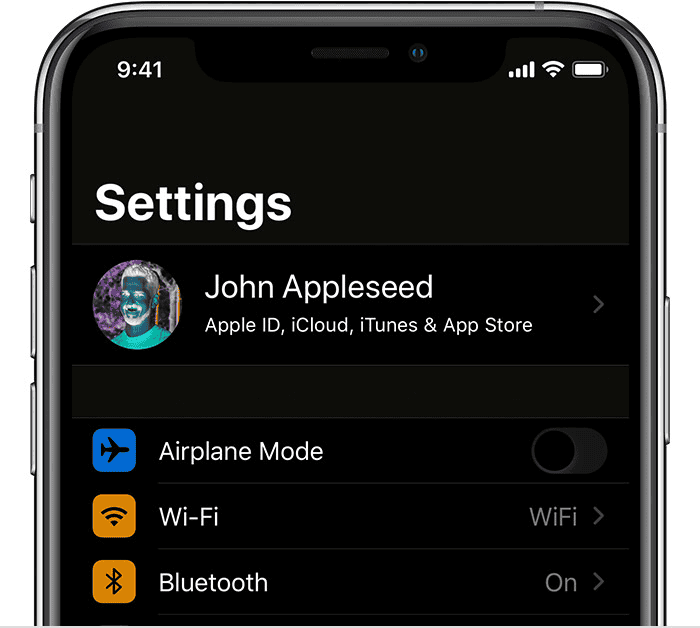Making your iPhone screen black and white can be a game-changer. This simple change can help reduce eye strain, save battery life, and even cut down on phone use. To turn your iPhone screen black and white, go to Settings > Accessibility > Display & Text Size > Color Filters and turn on Grayscale.
The grayscale option changes all colors on your screen to shades of gray. This can make your phone less appealing to look at, which may help you use it less. It can also be easier on your eyes, especially at night or in low light.
Some people use grayscale mode to take better black and white photos. Others find it helps them focus more on text and less on colorful app icons. You can even set up a shortcut to switch between color and grayscale with three clicks of the side button.
Transform Your iPhone’s Look: The Black and White Guide

Why Go Grayscale?
Want to give your iPhone a classic look? Or maybe you’re looking to reduce eye strain or distractions? Switching your iPhone’s display to black and white can be a cool visual change or help you focus better. There are a few ways to do this, and we’ll explore the most common methods.
Method 1: Color Filters (The Easy Way)
This is the simplest way to make your iPhone display black and white.
- Open Settings: Tap the “Settings” app on your home screen (it looks like a gear).
- Go to Accessibility: Scroll down and tap on “Accessibility.”
- Select Display & Text Size: In the Accessibility menu, tap on “Display & Text Size.”
- Choose Color Filters: Tap on “Color Filters.”
- Turn on Color Filters: Toggle the switch at the top to turn on Color Filters.
- Select Grayscale: From the list of filter options, choose “Grayscale.”
Your iPhone’s display will instantly switch to black and white!
Method 2: Shortcuts (The Automated Way)
If you want a faster way to switch between color and black and white, you can use the Shortcuts app.
- Open the Shortcuts App: If you don’t have it, download it from the App Store.
- Create a New Shortcut: Tap the “+” button to create a new shortcut.
- Add the “Set Appearance” Action: Search for “Set Appearance” and add it to your shortcut.
- Choose “Light” or “Dark”: In the “Set Appearance” action, choose “Light” for a black and white light mode or “Dark” for a black and white dark mode.
- Save the Shortcut: Give your shortcut a name (like “Black and White Mode”) and save it.
- Add to Home Screen (Optional): You can add this shortcut to your home screen for quick access.
Now you can run this shortcut to quickly switch to black and white mode whenever you want.
Method 3: Smart Invert (Almost Black and White)
Smart Invert reverses the colors of your display, except for images, media, and some apps that use dark color styles. This isn’t true black and white, but it can be a good alternative.
- Go to Accessibility: Follow steps 1 and 2 from Method 1.
- Select Display & Text Size: Tap on “Display & Text Size.”
- Choose Smart Invert: Tap on “Smart Invert.”
- Turn on Smart Invert: Toggle the switch to turn it on.

Which Method is Best?
- Color Filters: The most accurate black and white mode.
- Shortcuts: Convenient for quick switching.
- Smart Invert: A good alternative if you want to keep some color elements.
Additional Tips
- Focus Mode: You can use Focus Mode to automatically activate your black and white shortcut when you want to concentrate.
- Triple-Click Shortcut: Set up a triple-click shortcut on your iPhone’s side button to quickly toggle Color Filters or Smart Invert. (Go to Settings > Accessibility > Accessibility Shortcut).
With these methods, you can easily customize your iPhone’s display and experience the benefits of a black and white screen.
Key Takeaways
- Turning on grayscale mode can reduce eye strain and phone use
- The setting is found in the Accessibility menu under Color Filters
- Users can create a shortcut for quick switching between color and grayscale
Understanding iPhone’s Grayscale Mode
Grayscale mode on iPhone changes the display to black and white. This feature can help reduce screen time and improve accessibility for some users.
Benefits of Using Grayscale
Grayscale mode can cut down on phone use. The black and white screen makes apps less appealing. This can help people who want to spend less time on their phones.
Grayscale also saves battery life. The screen uses less power when it’s not showing colors. This can be helpful when you need your battery to last longer.
Some users find grayscale easier on their eyes. It can reduce eye strain, especially at night. The lack of bright colors may help some people sleep better if they use their phone before bed.
Impact on Accessibility
Grayscale is a useful accessibility feature. It can help people who are colorblind. By removing colors, it makes it easier to distinguish between different elements on the screen.
For those with vision issues, grayscale can improve contrast. This makes text and icons clearer and easier to see. It can be especially helpful for older users or those with certain eye conditions.
To turn on grayscale, go to Settings > Accessibility > Display & Text Size > Color Filters. Then turn on Color Filters and select Grayscale. You can also add a shortcut to the Control Center for quick access.
Navigating Accessibility Settings for Grayscale
The iPhone offers several ways to enable grayscale mode. Users can access this feature through the Settings app, use Accessibility Shortcuts, or adjust Color Filters.
Enabling Grayscale through Settings App
To turn on grayscale mode using the Settings app:
- Open the Settings app
- Tap “Accessibility”
- Select “Display & Text Size”
- Scroll down and tap “Color Filters”
- Toggle on “Color Filters”
- Choose “Grayscale” from the list of options
This method changes the iPhone display to black and white. Users can easily reverse this change by following the same steps and turning off Color Filters.
Utilizing Accessibility Shortcuts
For quicker access to grayscale mode:
- Go to Settings > Accessibility > Accessibility Shortcut
- Tap the “+” icon next to “Color Filters”
Now, users can triple-click the side button (or home button on older models) to toggle grayscale on or off. This shortcut allows for fast switching between color and black-and-white display.
Exploring Color Filters Options
The Color Filters menu offers more than just grayscale:
- Protanopia
- Deuteranopia
- Tritanopia
- Color Tint
These options help users with different types of color blindness. To adjust the intensity of any filter:
- Select a filter
- Use the slider at the bottom of the screen
Users can experiment with these settings to find the best display option for their needs.
Automating Grayscale for Convenience
Turning your iPhone screen black and white can be made easier with automation. This saves time and helps create healthy screen habits.
Creating Automation with Shortcuts App
The Shortcuts app on iPhone lets you set up grayscale automation. Open the app and tap the Automation tab. Tap the plus sign to make a new automation. Choose “Time of Day” as the trigger. Pick when you want grayscale to turn on.
Next, add the “Set Color Filters” action. Turn on Color Filters and select Grayscale. Save your automation. Your iPhone will now switch to black and white at the set time each day.
You can also make an automation to turn off grayscale. Just create a new automation with a different time and set Color Filters to off.
Setting Up Personal Automation with Siri
Siri can help you set up grayscale automation quickly. Say “Hey Siri, create a new automation.” Then tell Siri when you want grayscale to turn on.
For example, say “Turn on grayscale at 9 PM every day.” Siri will guide you through the steps to set this up in the Shortcuts app. You can also ask Siri to turn grayscale on or off anytime by saying “Hey Siri, turn on grayscale” or “Hey Siri, turn off grayscale.”
Using Control Center for Quick Access
Add grayscale to your Control Center for fast toggling. Go to Settings > Control Center. Find “Color Filters” and tap the plus sign next to it. This adds a grayscale button to Control Center.
To use it, swipe down from the top-right of your screen to open Control Center. Tap the grayscale icon to switch between color and black and white. This method is great for quick changes without opening Settings each time.
You can also set up a shortcut in Control Center to turn on grayscale at certain times. This combines the ease of Control Center with the power of automation.







